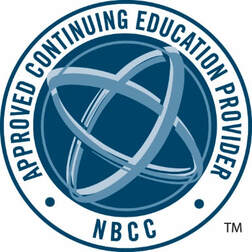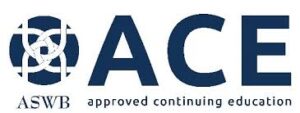 Date course created: July 2024
Date course created: July 2024
Keeping healthy boundaries in therapy sounds “easy.” But in practice, doing so consistently can be extremely difficult, especially when client-therapist feelings of attraction (and other forms of transference) develop. Actively setting protective boundaries can be stressful and at times, and downright awkward as we balance this process with building a solid alliance! Providers may not always admit or discuss situations in which they may be attracted to a client or when a client may flirt with them, but romantic attraction is an involuntary emotional process that can and absolutely does sometimes occur within the therapeutic relationship. Successfully recognizing and managing these feelings and situations is vital to ensure therapy is delivered effectively and ethically. Setting professional boundaries is the cornerstone of success in all therapy relationships, and the absence of consistent boundaries is at the heart of the most common and destructive ethical violations we see.
Please join us to increase your knowledge and insight into appropriately setting ethical boundaries in challenging (sexual, romantic, and other) situations with clients. Jodi Geis-Crowder brings 26 years of experience in the field and will draw on that experience to increase your knowledge of how the behavioral health care industry is commonly reflected in our traditional media, social media, and broader culture. These influences impact expectations of clients, resulting in some unrealistic expectations regarding what therapy is and isn’t. Jodi will also provide a checklist that can be used in mandatory disclosure to artfully deploy ethical boundaries to help you manage expectations throughout the therapeutic relationship. She will share case examples to challenge your ethical decision-making and help you navigate ethical dilemmas when they arise. Finally, she will review specific diagnoses such as personality disorders and clients challenged by chronic suicidal ideation – learn ethically-informed strategies to safely work with these clients.
2. Identify three ways that you can safely market your practice while maintaining professional boundaries with marketing and social media.
3. Identify two reasons why a clear fee schedule is a necessity and how to manage monetary challenges without contaminating the therapeutic relationship.
4. Define your own ethical decision-making model and identify three points that should be part of your model.
5. Demonstrate an understanding of the importance of obtaining a supervisor or consultant by identifying two ways that consulting with another professional can assist you to set clear boundaries and protect your professional liability.
**This is a 3-CE noninteractive, self-paced online video course delivered in home study format via an industry-standard online learning platform**
Agenda:
- 0:00 – 01:00: Setting ethical boundaries in therapy.
- 01:00 – 01:30: Managing transference
- 01:30 – 02:20: Ethical decision-making models
- 02:20 – 03:00: Ethical considerations
Objectives:
This training will provide participants clinical knowledge and tools to:
a). After completing this training, participants will be able to identify three reasons why mandatory disclosure is one of the most important aspects of client care and setting the stage for healthy boundaries from the first session.
b). After completing this training, participants will be able to define ethical client boundaries and identify at least three approaches that assist a therapist to manage clients that push boundaries while preserving the therapeutic relationship.
c). After completing this training, participants will be able to define transference and countertransference and two approaches that you can take to manage it in a therapeutic relationship.
d). After completing this training, participants will be able to identify two approaches to managing flirting and sexual attraction in the therapeutic relationship.
Target Audience:
Clinical Mental Health Professionals such as Counselors, Psychologists, Marriage and Family Therapists, and Licensed Clinical Social Workers.
Instructional Level: Intermediate
Instructor(s): Jodi Ann Geis-Crowder, MS, LPC, ACS
Material Author(s): Jodi Ann Geis-Crowder, MS, LPC, ACS
For additional information about this course, the instructors, or the material authors, please contact Content Assistance at content@onlinececredits.com.
Course Materials & Delivery Method:
- Course materials – The course is composed of a recorded presentation and written materials (e.g. a slide deck and/or other worksheets, manuals, or handouts as provided by the instructor). The slide deck and any additional worksheets or handouts (as provided by the instructor) are made available inside the Lesson module after a course is purchased.
- Delivery Method – this course is a recorded asynchronous, self-paced webinar training, and there is no access time limit or due date to complete it once enrolled. The enrolled learner will stream the recorded presentation and view the materials from their internet connected device via an industry-standard online learning platform.
CE Approvals:

Online CE Credits has been approved by NBCC as an Approved Continuing Education Provider, ACEP No. 6795. Programs that do not quality for NBCC credit are clearly identified. Online CE Credits is solely responsible for all aspects of the programs.

Mind Works Professional Education, Inc. DBA Online CE Credits, #1974, is approved as an ACE provider to offer social work continuing education by the Association of Social Work Boards (ASWB) Approved Continuing Education (ACE) program. Regulatory boards are the final authority on courses accepted for continuing education credit. ACE provider approval period: July 23, 2024 – July 23, 2025. Social workers completing this course receive 3 ethics continuing education credits.
Other Helpful Information:
- Refund & Cancellation Policy – you may review this policy at any time by clicking here.
- Accessibility Accommodations – if you require a reasonable accommodation for any reason, please email your request to cc@onlinececredits.com
- Course Completion Requirements – 1.) View the entire Lesson module (accessible from the main course page), to include the embedded and/or linked presentation video(s), slide deck, additional materials, and/or links to any shared video clip(s) that may have been edited from the presentation video(s) to comply with copyright laws. 2.) Click into the Quiz module accessible from either the main course page or the Lesson page and complete the Quiz with an 80% or better pass rate. 3.) Complete the course evaluation – you’ll be sent to the evaluation automatically once you successfully pass the Quiz.
- Posttest Requirements – you must answer 80% or more of the Quiz questions correctly to pass. If you fail to pass the first time, you may attempt the quiz again until you are able to pass with a score of 80% or better. Quizzes are graded instantly and automatically by the learning management system once your attempt is submitted.
- Certificate of Completion – certificates of completion are automatically generated – downloadable from your Dashboard and emailed to you – once you view the Lesson materials and complete the Quiz and the course evaluation.
- How to Enroll – Login to the website first if you already have a user account. If not, you will create your permanent user account login information during course enrollment. Select the appropriate course library using the top menu of the website. Once inside your chosen course library, find and select your desired course to be taken to the main course page. Click the button on the top banner to enroll. When the order window pops up, enter your details and place your order. You will be emailed an enrollment confirmation message, and you’ll be sent to a landing page instructing you how to begin your newly enrolled course.
- System Requirements –
- Recommended Devices: Desktop, Laptop, or Tablet computer. (Note: Our platform is mobile responsive and may be fully accessed from a connected smartphone).
- Suggested Browsers: Updated version of Google Chrome, Microsoft Edge, or Apple Safari.
- Recommended Network: Home wifi, ethernet, or a public wifi with VPN (Note: agency or corporate networks are often equipped with restrictive firewalls that may adversely impact your experience on our platform).
- Recommended speed/bandwidth: Minimum download speed > 20Mbps and minimum upload speed > 6Mbps.
